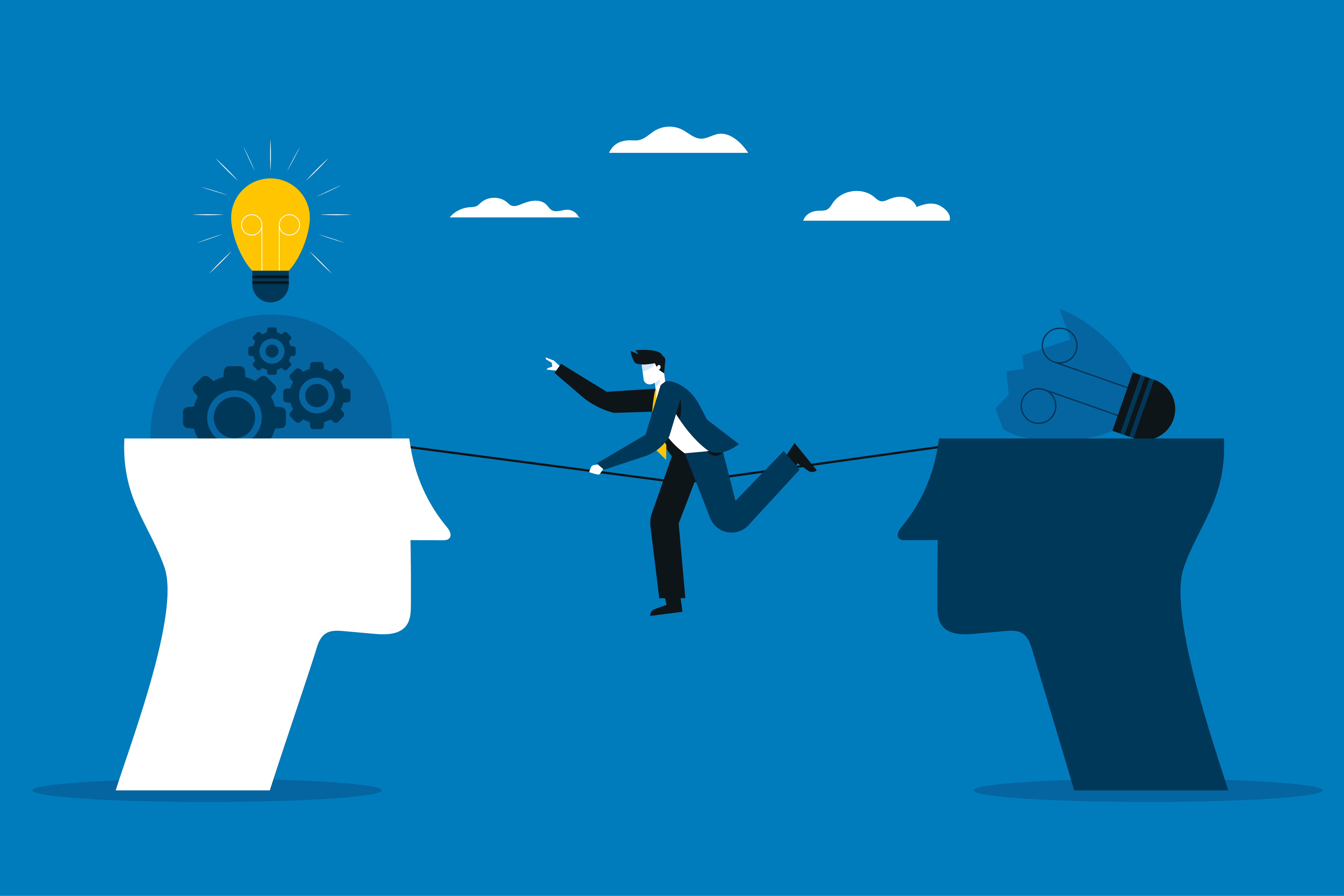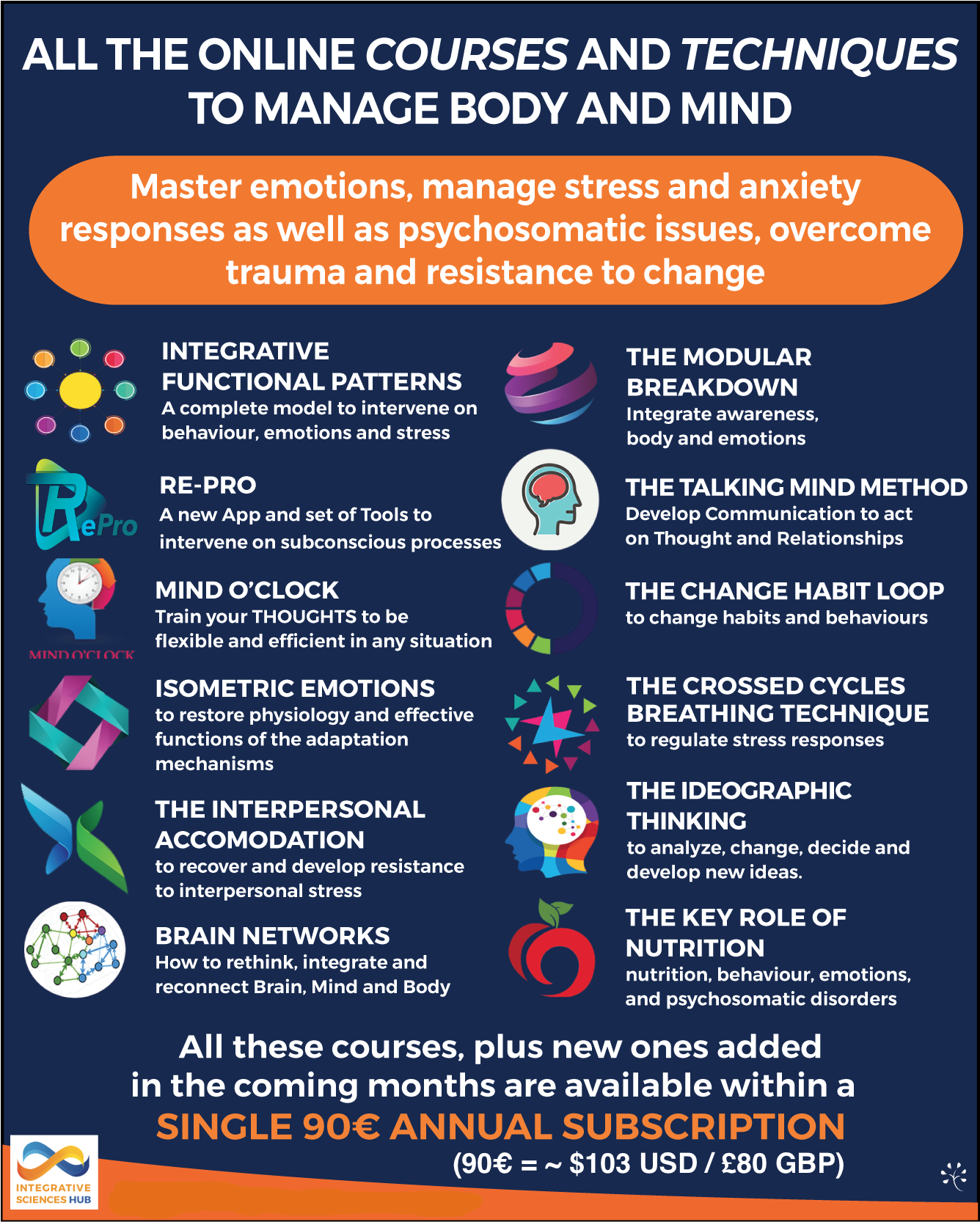
5 suggestions to achieve change in 10 days
Jun 22, 2023Change is a constant companion on life's voyage. Through its many facets and forms, it accompanies us along our personal and collective journey.
Change can be difficult because it forces us to leave the comfort of routine and face the unknown. However, it is precisely through change that we can grow, learn and develop as individuals. It gives us the opportunity to overcome our limitations, explore new horizons and discover our true potential.
Change can be challenging and liberating. It allows us to abandon old patterns of thinking and adopt new perspectives. It opens doors for us to new experiences, people and ideas that can enrich our lives in unexpected ways.
In this article, we have selected 5 practical, scientifically based and applicable tips for everyone to change in 10 days and with simple steps.
You can try it yourself or have the people you work with who struggle to change or always have some excuse not to do so try it.
These suggestions are key to improving well-being and to create and ideal state of health. They don’t require particular effort, rather they simplify things and help improve life!
Using these tips for at least 10 days you can test first-hand how little action is required to feel better, think more clearly and how to the little aches and pains that have been bothering us for ages can be reduced (at least a little).
What follows are small provenly effective tips (we tested them on ourselves, in professional practice and in specific research projects). The detailed theoretical foundations are those that the Integrative Sciences and our work are based on, so you can find them in the book The Switch and in the articles on the website, as well as in the free-to-access webinars available on our site following this link, along with all the other elements you should work on.
NB: this is our new website, a lot of updated material (articles, webinars, videos, etc.) is ready to be published (we are just double checking everything before releasing them). Please subscribe to our newsletter to get notified as soon as it is available.
In this article we will limit ourselves to basic interventions that, in their simplicity, have a very important impact. We will make only a few wider spanning references to the theory, leaving more room for practical elements.
We are enthusiastic and confident, but we are also realistic: in 10 days, with 5 simple hacks we can’t expect to change our lives entirely and solve long-standing problems, but we can be sure that we are starting an important process and that we can begin to feel more well-being, better performing and more energetic. In addition to this we are opening ourselves up to more targeted change interventions.
A warning about possible resistance: some people might say “I already do this” or “I have tried it before and it doesn’t work on me” but if we investigate more closely they have rarely really done all these things, fully and every day. In addition to this, people tend to provide themselves with a lot of excuses and make concessions for themselves….but time and method are there for a reason, try to follow them as closely as possible!
THE 5 PRACTICAL TIPS
1. Less is more!
Don’t eat anything (including drinking alcohol or sweet drinks) between supper and breakfast.
This time-window should last at least 8 hours, but if you can try to reach 10 (for example if you finish eating supper at 9pm and have breakfast at 7am). It is key that during this phase you only drink water or herbal tea devoid of sweeteners (also avoid ‘zero calories’ drinks that often contain other substances…).
This gives your organs a break and reduces insulin peaks, favouring the immune system, thought processes and emotional regulation.
2. Reactivate your body (even for just 20 minutes a day!)
You can go for a walk around the block or take a basic yoga session on YouTube… the important thing is that you move your body for at least 20 minutes each day.
If your excuse is that you “don’t have time”, include these moments in other activities, for example: park a little further away from where you work or where you shop; if you are taking an online course, you can listen to it in your headphones as you walk; carry out your routine calls to colleagues and relatives while you walk; try doing some exercise or yoga with your children or while they do their homework so you are close at hand.
3. Don’t waste energy – The Body
Our body often takes on rigid or blocked positions because of our work or due to stress and other factors. Neck, shoulders and back are some of the areas of the body that are most likely to pay the price and create a biofeedback that negatively alters thoughts and emotions.
Set an alarm-clock twice a day, roughly halfway through the morning and then the afternoon. When it sounds, stand up, move about (go to the bathroom, pour yourself some water etc.) look out the window a bit (our eyes were not made to stare at a close-by things such as a screen for any length of time), relax your shoulders and neck. If you want, use these moments to do the basic 3-minute version of the Crossed Cycles Breathing technique (you can access the full course via a HUB subscription, but the basic model will be freely accessible on the new website soon).
4. Don’t waste energy – Thoughts
The most common thought error is that of going over something that didn’t go as planned over and over again. There is a useful core element: that of trying to solve the problem or get a better outcome next time…but this often turns into self-pity, or into a way of blaming ourselves and others to no avail.
The first tip is: after an argument, a disappointment or another negative event give yourself 10 minutes to get it out of your system then ask yourself: “am I solving the problem this way or not?“. If the answer is “yes” and you are sure, then continue, if not, move on to something else.
The second tip is: if you find you keep thinking about the same event, try to do it in a foreign language that you are not mother tongue in; it will be clear to you that you keep repeating the same sentences and concepts without truly analysing the issue or looking for a solution.
5. Sensory perception…. With regards to People as well as Food!
We are always in a hurry, it is a problem.
In addition to this, in our hurry we tend to put a series of dysfunctional behaviours in place such as:
- not listening and not watching others, so that we can’t ever really understand them;
- not listening to our body, reaching extreme tiredness and exhaustion to the point when psychosomatic symptoms star to appear;
- not savouring food properly, losing all interest in the ones that are really good and becoming unable to identify low-quality foods with all the negative consequences this has on our health.

A practical tip: apply the 8-second rule. Not many is it? And yet, if you hold coffee or food in your mouth for 8 seconds your flavour receptors are correctly activated, and you will find that foods that you thought were nice are not so at all! In the same way, if you follow the 8-second rule with a person when they speak, without thinking about anything else (just counting to 8 slowly) and observe their face, posture and their energy carefully… you will discover interesting clues!
You could discover that people, like foods, have features you didn’t think they had and your reactions to them might be significantly different and more straight-forward too.
Want to do even more?
We will soon send you more suggestions…in the meantime remember that you can spread out and analyse the ways you realise the top 5 tips and the results will also be wider-spanning! Let us know how your experiments go!
These tips cannot substitute an in-depth and targeted intervention or the counsel of a specialist. Use them well and turn to a professional consultant if in doubt.
Stay connected with news and updates!
Join our mailing list to receive the latest news and updates from our team.
Don't worry, your information will not be shared.
We hate SPAM. We will never sell your information, for any reason.


